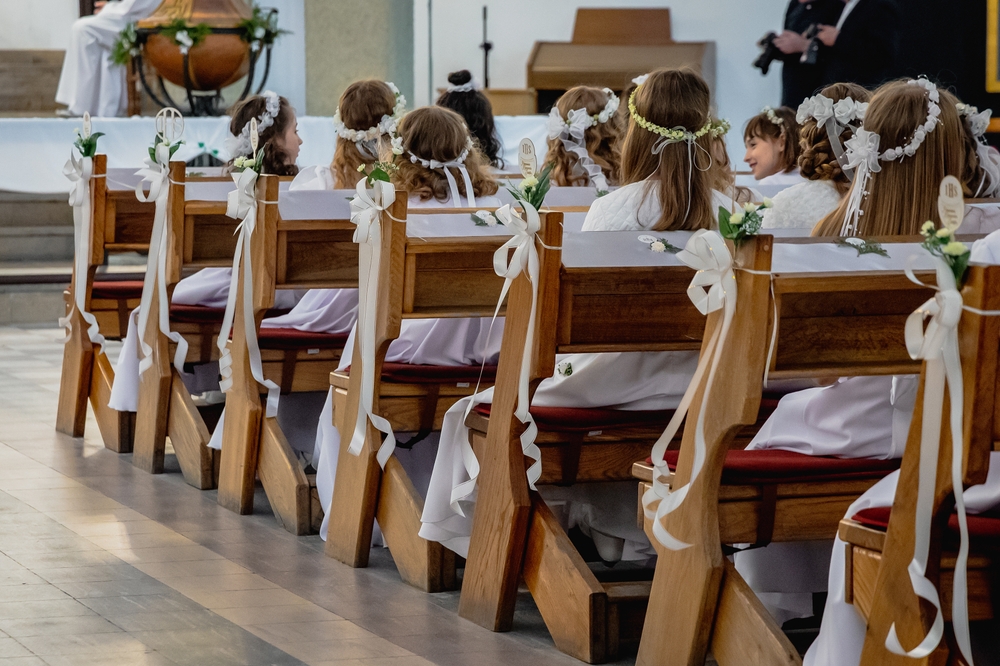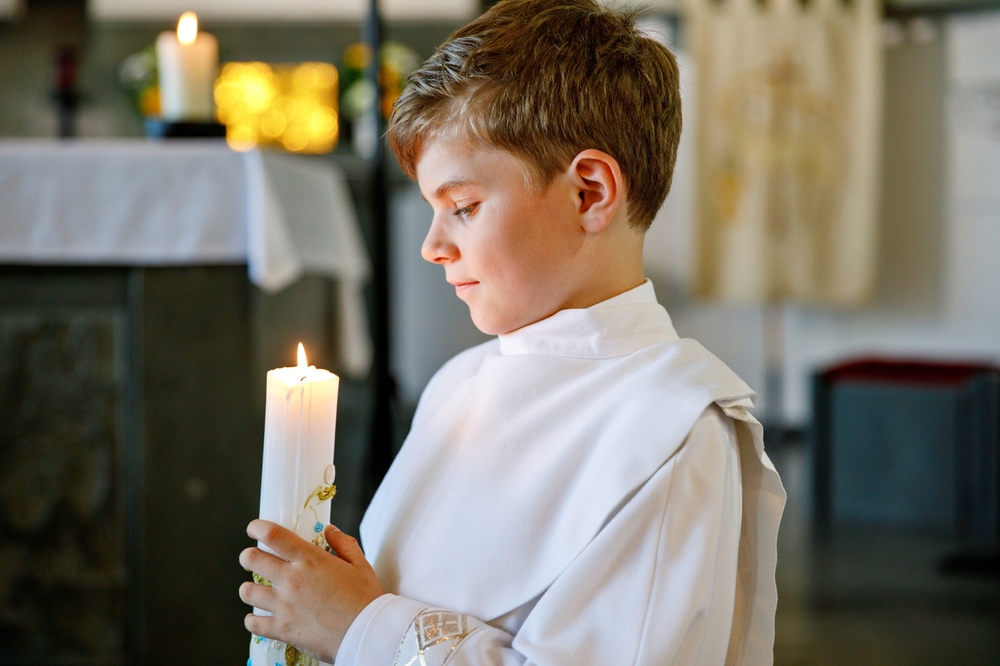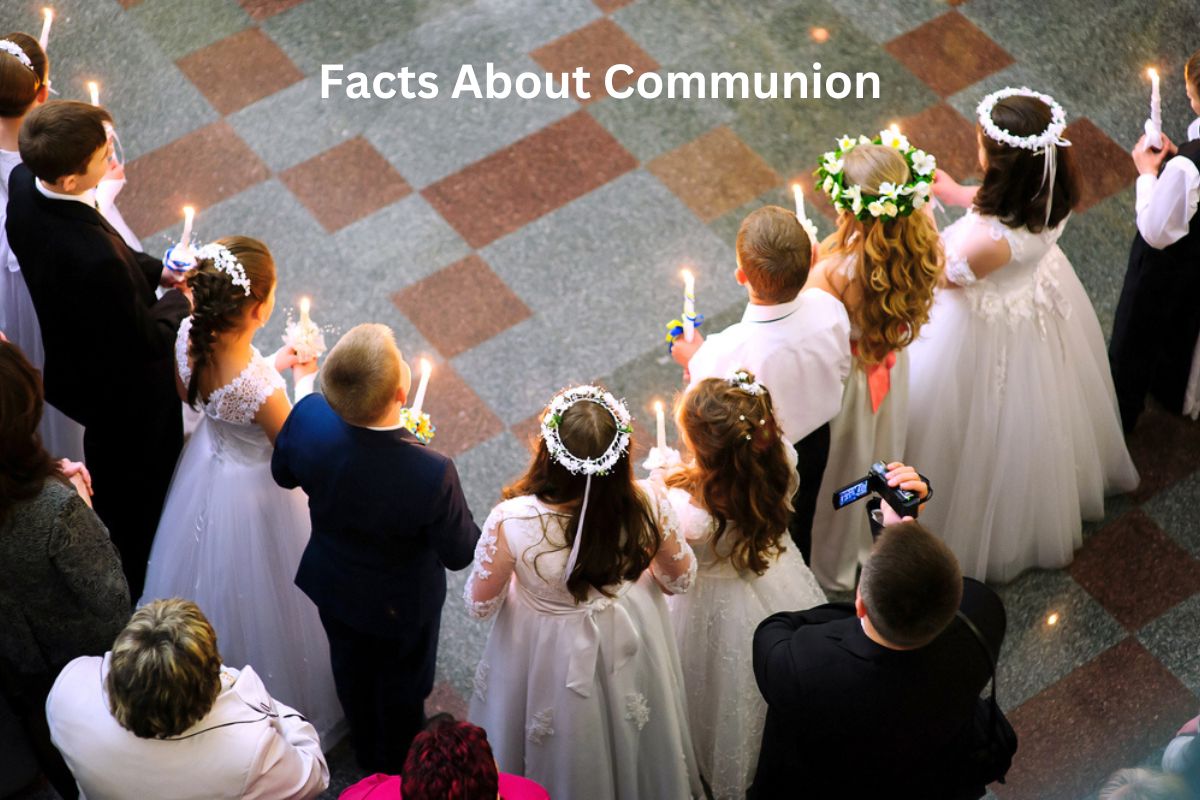Communion, also known as the Eucharist or the Lord’s Supper, is a central and sacred ritual in Christianity. Rooted in the Last Supper, where Jesus shared bread and wine with his disciples,
Communion involves the symbolic use of these elements to commemorate Christ’s sacrifice on the cross. It encompasses various beliefs, practices, and traditions, such as transubstantiation and consubstantiation, variations in frequency, and the use of specific Communion vessels.
Preparation for Communion often involves self-examination and repentance, and there are differences between open and closed Communion practices.
Beyond its symbolism, Communion represents Christian unity and community, emphasizing believers’ shared faith in Christ and their hope of eternal fellowship with Him.
Communion Facts
1. Communion originates from the Last Supper
Communion, also known as the Eucharist or the Lord’s Supper, has its origins in the Last Supper, a significant event in Christian history. According to the New Testament, on the night before his crucifixion, Jesus Christ gathered with his disciples to share a Passover meal.
Also Read: Facts About Baptism
During this meal, Jesus took bread, blessed it, broke it, and gave it to his disciples, saying, “This is my body, which is given for you. Do this in remembrance of me.”
He also took a cup of wine, gave thanks, and gave it to them, saying, “This cup that is poured out for you is the new covenant in my blood” (Luke 22:19-20).

2. It uses bread and wine (or grape juice) as symbols
In Communion, bread and wine are used as symbolic elements. The bread represents the body of Jesus Christ, which was broken for the forgiveness of sins.
The wine (or grape juice in some denominations) represents his blood, which was shed on the cross for the redemption of humanity. These elements serve as a reminder of Christ’s sacrifice and the salvation that comes through faith in him.
3. Some believe in transubstantiation (literal transformation)
Transubstantiation is a theological doctrine primarily upheld by the Roman Catholic Church. According to this belief, during the consecration of the bread and wine by a priest during the Communion service, these elements undergo a miraculous transformation.
Also Read: Confirmation Facts
While their outward appearance remains the same, their substance is believed to change into the literal body and blood of Jesus Christ.
This transformation is understood as a mystery and a profound expression of Christ’s real presence in the Eucharist. It is not symbolic but rather a sacramental reality, and the consecrated elements are treated with great reverence and worship in the Catholic tradition.
4. Others believe in consubstantiation (Christ’s presence alongside)
Consubstantiation is a theological doctrine associated with some Protestant denominations, most notably the Lutheran tradition.
Unlike transubstantiation (as mentioned in fact 3), which teaches a literal transformation of the bread and wine into the body and blood of Christ, consubstantiation posits that Christ is truly present alongside the bread and wine.
In other words, Lutherans believe that while the bread and wine retain their substance, Christ’s real presence coexists with them in a unique and mysterious way during the Communion.
This view emphasizes the idea that Christ is spiritually and sacramentally present in the Eucharist without a change in the elements themselves.

5. Frequency varies, from weekly to occasional
The frequency of Communion can vary significantly among Christian denominations and individual churches. Some denominations, such as Anglicans, Lutherans, and many evangelical Protestant churches, celebrate Communion on a weekly basis, often as a central part of their worship services.
Others, like Roman Catholics, may have daily Mass with Communion available. In contrast, some denominations, particularly those in the Reformed tradition, practice Communion less frequently, such as monthly or quarterly, and often emphasize its symbolic and remembrance aspects.
6. Bread and wine types vary by tradition
The types of bread and wine (or grape juice) used in Communion can vary depending on local customs and denominational preferences. Traditionally, unleavened bread is used in many Christian traditions, symbolizing purity and sincerity.
However, some churches use leavened bread, while others may use ordinary bread or wafers. Similarly, the choice between wine and grape juice depends on theological views, local culture, and the needs of congregants.
In some cases, churches may offer both wine and grape juice to accommodate a wider range of preferences and needs, including those of children and individuals with certain dietary restrictions.

7. Special vessels like chalices and patens are used
Communion vessels are the sacred objects used to hold and distribute the bread and wine during the Communion service. These vessels are typically made from precious materials like gold, silver, or fine ceramics and are often ornately decorated. The two primary types of vessels used are:
- Chalice: The chalice is a cup used to hold the wine during Communion. It is often accompanied by a lid called a paten, which covers the bread or wafers. The chalice is a symbol of the cup used by Jesus during the Last Supper.
- Paten: The paten is a small, shallow plate used to hold the bread or wafers. It is usually placed on top of the chalice during the consecration and is lifted together with the chalice during the distribution of Communion.
These vessels are considered sacred and are typically handled with great care and reverence. They may be blessed or consecrated before use in the Communion service.
8. Preparation involves self-examination and repentance
Before participating in Communion, many Christian traditions encourage individuals to engage in a period of self-examination and repentance.
This practice is meant to ensure that participants approach the Communion table with a humble and contrite heart, acknowledging their need for forgiveness and reconciliation with God. It is a time to confess sins, seek forgiveness, and reflect on one’s relationship with God and others.
9. Open and closed Communion practices exist
There are two primary approaches to who can partake in Communion:
- Open Communion: In churches that practice open Communion, all baptized Christians, regardless of their denominational affiliation, are welcome to participate. This approach emphasizes the inclusivity of the Communion table, inviting believers from various Christian backgrounds to share in the sacrament.
- Closed Communion: In contrast, closed Communion is more exclusive. It restricts participation to members of a particular denomination or local church who meet specific criteria set by that faith community. Typically, this approach is rooted in the belief that Communion is a sign of unity within a specific faith tradition.
10. It symbolizes Christian unity and community
Communion is not just a symbolic ritual but also a profound symbol of Christian unity and community. When believers partake in Communion, they are not only remembering Christ’s sacrifice but also demonstrating their unity as the body of Christ.
The act of sharing the same elements and remembering the same Lord fosters a sense of communion not only with Christ but also with fellow believers. It reinforces the idea that all Christians, regardless of their individual differences or backgrounds, are part of one spiritual family.
